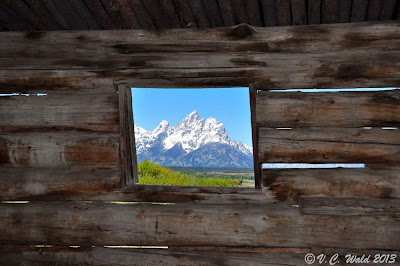The granddaddy of parkitecture is of course Yellowstone National Park's Old Faithful Inn that has been accepting lodgers since the summer season of 1904. OFI was designed by the architect Robert Reamer, who is quoted as saying, "To be at discord with the landscape would be almost a crime. To try to improve upon it would be an impertinence.” His genius touched many other major structures in Yellowstone, including the now deceased original hotel at the Grand Canyon of the Yellowstone, and the still flourishing Yellowstone Lake and Mammoth Hot Springs Hotels.
Old Faithful Inn is a triumphant survivor, to wit, just 25 years ago almost to the day, the devastating forest fires of 1988 came treacherously close to igniting the world's largest log structure. Disaster was miraculously avoided by the effectiveness of the sprinkler system, installed only the year before, combined with the massive efforts of firefighting crews to keep the exterior drenched until the wind direction changed.
Since then, the Inn has undergone extensive rehabilitation and deep renovation, including incorporation of much more sophisticated fire suppression systems, and shoring up of the foundations and massive stone and log infrastructure to better resist the almost constant small, and occasional large, earth quakes shaking the region.
Today it is difficult to get a good head-on view for photographing the front-central exterior inn, in part because of the exuberant growth of lodgepole pines and because area directly in front of the inn is relatively sunken.
But within the Inn's doors is a most stunning lobby of proportions not dissimilar to the many grandiose natural features of the park.
Only Reamer could carry off such splendorous rusticity.
A great place to sit and restore trail-sore feet is in front of the 85-foot floor-to-roof lava stone fireplace with its firescreen depicting the stylized plume of Old Faithful geyser just a few hundred feet beyond the Inn's east wing.
Even the dining room at the Inn is renowned for its "I want to be there" appeal aimed right at people like me and KLK. And yes, the menu includes bison stew and trout, needless to add, both from farmed sources.
The Inn still accommodates overnight guests, and we were fortunate enough to nab a
room there this June. The modern decor makes pleasant, if simplified
reference to the rustic Prairie-Craftsman style of the building, with
details successfully echoing the tastes of Reamer's day.
OFI is extraordinary from every angle, inside and out.
There is no question in my mind that it was very wise to invest in the conservation of this extraordinary building through its numerous trials and tribulations over the past 109 years: the ordinary vicissitudes of time, fires, earthquakes, budget cuts, and competing priorities. May it last another 109 and many more than that.








































